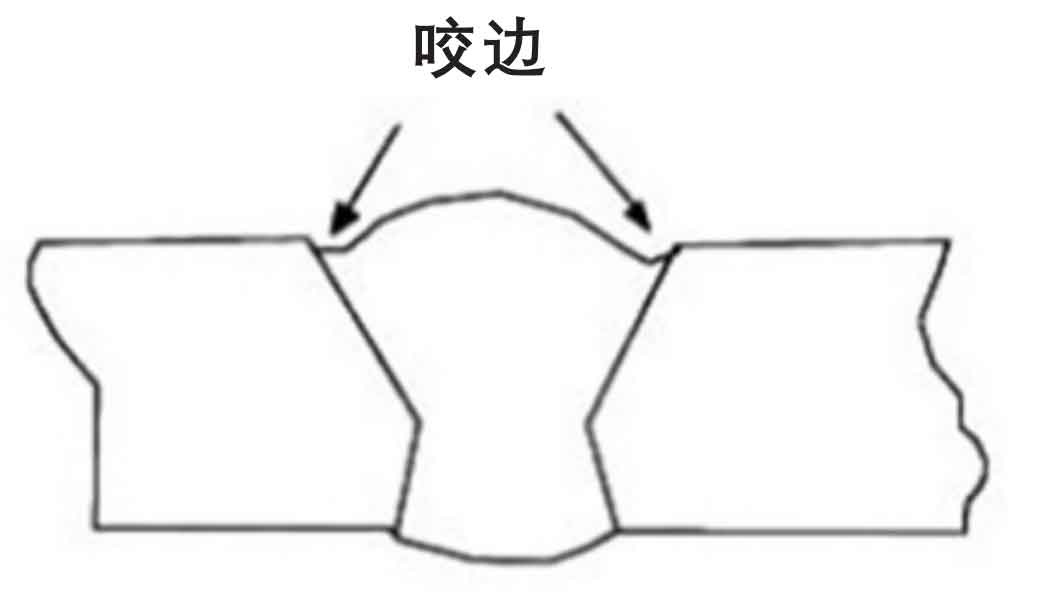Best Guide to Preventing Weld Undercut: Tips and Techniques
Best Guide to Preventing Weld Undercut: Tips and Techniques
Blog Article
Grasping the Art of Welding: How to Prevent Undercut Welding Issues for Flawless Fabrication Results
Performance and precision are vital worldwide of welding, where also the least flaw can endanger the architectural stability of a made piece. One typical obstacle that welders face is undercutting, a problem that can lead and compromise a weld joint to pricey rework. By understanding the origin of undercut welding and implementing effective techniques to stop it, welders can elevate their craft to brand-new levels of excellence (Preventing weld undercut). In the pursuit of flawless construction outcomes, grasping the art of welding to prevent undercut concerns is not simply an ability but a necessity for those aiming for excellence in their job.
Understanding Undercut Welding

To protect against undercut welding, welders need to make sure proper welding specifications, such as readjusting the existing, voltage, travel speed, and keeping the appropriate electrode angle. Furthermore, using the proper welding technique for the certain joint configuration is crucial. Utilizing weaving activities or backstepping techniques can assist make certain appropriate weld steel deposition and reduce the probability of undercut development. Regular examination of welds during and after the welding procedure is also crucial to capture any type of undercut very early and make needed modifications to protect against more flaws. Preventing weld undercut. By comprehending the reasons of undercut welding and implementing safety nets, welders can accomplish top quality, structurally audio welds.
Sources Of Undercut in Welding
Understanding the aspects that add to damage in welding is essential for welders to create high-quality, structurally sound welds. Undercutting happens when the weld metal does not properly fill up the groove created between the base metal and the previously deposited weld metal. A number of factors can cause undercut in welding. One usual reason is too much heat input. Welding at high temperature levels for extended durations can result in the base steel thawing greater than desired, resulting in undercut. Inadequate welding existing or inaccurate welding speed can also add to undercut. Insufficient current might not offer adequate warm to melt the base and filler steels appropriately, while extreme speed can protect against appropriate fusion, creating undercut. In addition, incorrect electrode angles you can try this out or incorrect lantern manipulation strategies can produce areas of low weld steel deposition, advertising undercut. Comprehending these causes and applying appropriate welding techniques can aid avoid undercutting problems, making sure strong and durable welds.
Methods to avoid Undercutting

To minimize the danger of damaging in welding, welders can employ critical welding techniques intended at enhancing the high quality and stability of the weld joints. One efficient technique is to adjust the welding criteria, such as voltage, present, and take a trip speed, to guarantee correct heat input and deposition. Maintaining a suitable electrode angle and making sure regular traveling rate can additionally aid protect against undercut. In addition, making use of the correct welding technique for the specific joint configuration, such as weave or stringer beads, can contribute to reducing undercutting. Preventing weld undercut.
Moreover, appropriate joint preparation, consisting of making certain tidy base materials devoid of impurities and making use of the proper welding consumables, is critical in stopping undercut problems. Employing back-step welding strategies and managing the weld bead account can additionally assist distribute warmth uniformly and minimize the threat of undercut. Normal assessment of the weld joint during and after welding, in addition to executing quality control actions, can help in dealing with and discovering undercutting concerns without delay. By applying these strategies faithfully, welders Read Full Report can attain perfect fabrication results with minimal undercut defects.
Relevance of Proper Welding Criteria
Picking and maintaining proper welding criteria is important for attaining effective welds with minimal flaws. Welding criteria refer to variables such as voltage, existing, travel speed, electrode angle, and protecting gas circulation price that straight influence the welding procedure. These parameters should be meticulously adjusted based on the kind of product being bonded, its density, and the welding technique employed.
Appropriate welding specifications make certain the correct amount of warmth is related to melt the base steels and filler material consistently. If the criteria are set expensive, it can result in too much warmth input, causing distortion, burn-through, or spatter. On the other hand, if the criteria are as well reduced, incomplete fusion, lack of penetration, or damaging may take place.
Top Quality Assurance in Welding Workflow

Conclusion
Finally, understanding the art of welding calls for a thorough understanding of undercut welding, its reasons, and methods to avoid it. By ensuring correct welding specifications and implementing quality control practices, remarkable construction results can be attained. It is necessary for welders to regularly make every effort for quality in their welding operations to stay clear of undercut great site issues and generate top notch welds.
Undercut welding, a common issue in welding procedures, occurs when the weld steel doesn't effectively fill up the groove and leaves a groove or clinical depression along the welded joint.To prevent undercut welding, welders must guarantee correct welding parameters, such as readjusting the current, voltage, traveling speed, and preserving the correct electrode angle. Poor welding present or wrong welding speed can also add to undercut.To alleviate the risk of damaging in welding, welders can employ calculated welding techniques intended at boosting the high quality and integrity of the weld joints.In final thought, grasping the art of welding requires a comprehensive understanding of undercut welding, its reasons, and methods to prevent it.
Report this page